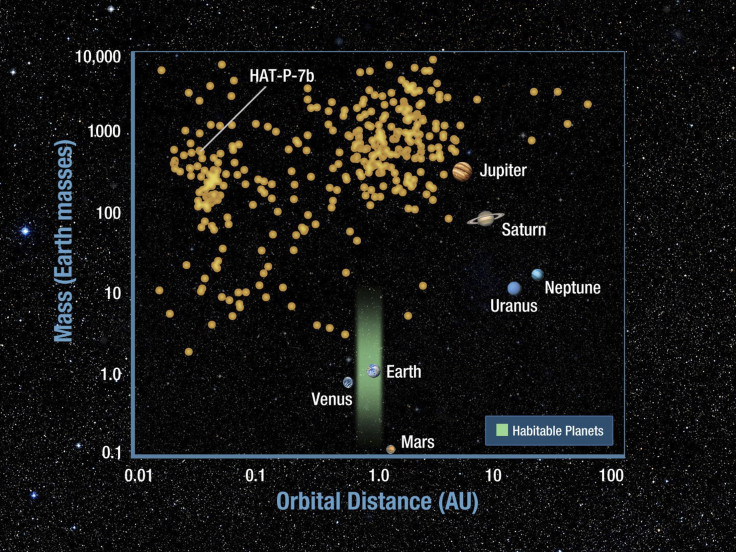Weather In Space: It Could Be Raining Rubies And Sapphires On Exoplanet HAT-P-7b

There’s an exoplanet with clouds so hot they could rain rubies and sapphires, scientists at the University of Warwick in England say.
The planet, a gas giant known as HAT-P-7b, orbits a star twice the size of the sun and is 16 times the size of Earth.
Lead researcher David Armstrong and colleagues at the university’s Astrophysics Group announced Monday, using four years of data from NASA’s Kepler space telescope, they have observed what appear to be clouds swirling around the planet about 1,000 light years (320 parsecs) from Earth. It is the first time a weather system has been documented outside our solar system.
The planet was first discovered in 2008 and is so close to its star, it completes its orbit every two days. Surface temperatures on the side that always faces the star are a searing 2,200 Kelvin (3,500 degrees Fahrenheit).
“We expect clouds to form on the cold night side of the planet, but they would evaporate quickly on the hot day side,” Armstrong said.
"These results show that strong winds circle the planet, transporting clouds from the night side to the day side. The winds change speed dramatically, leading to huge cloud formations building up then dying away. This is the first detection of weather on a gas giant planet outside the solar system."
The scientists studied light reflected from the planet’s atmosphere and noted the brightest point shifted position. They said the shift was caused by dramatically variable winds that pushed clouds across the planet.
Armstrong said the clouds are made up at least partially of the rock-forming mineral corundum, which helps form sapphires and rubies.
“When we say clouds, they’re definitely not clouds like on the Earth,” Armstrong said, adding that the minerals in the clouds would be vaporized because of the surface temperatures.
Hannah Wakeford at NASA’s Goddard Space Flight Center in Greenbelt, Maryland, who was not involved in the research, said we’re just beginning to understand the makeup of exoplanets and their atmospheres, New Scientist reported.
The research was published in Nature Astronomy.
Kepler was launched in March 2009 and spent four years looking for dips in light that could indicate the presence of planets among more than 150,000 stars. In 2013 the second of its reaction wheels failed forcing engineers to figure out a way to stabilize the spacecraft. Its mission was modified so that it mainly studies supernovas, asteroids and other cosmic objects and phenomena.
So far, it has confirmed 2,330 exoplanets.
© Copyright IBTimes 2024. All rights reserved.






















